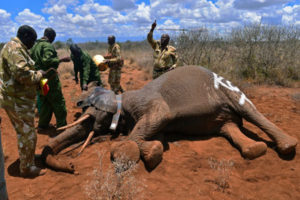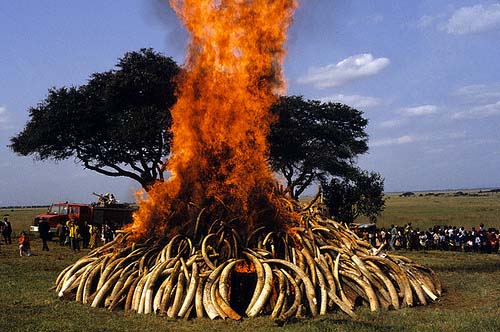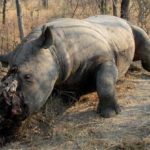Efforts to tackle elephant poaching in Kenya – Kyla Conway
In Kenya, the battle against poaching stills draws on, with efforts being made in order to save and protect Africa’s ‘big beasts’ from the terrible ivory poachers. But tackling the demand for ivory is crucial for success in the long term. Even though elephant hunting, elephant poaching and the exploitation of the ivory trade is illegal in Kenya, this still poses a major threat to elephant populations.
Around 30,000 elephants are still being killed every year. Due to the extent of poverty in the country and the high value of elephant tusks, many give in to the desire of making money and selling the tusks on the black market. This is especially prominent due to ivory in China having tripled in value between 2013 and 2014; which has caused thousands more elephants to be poached every year since.
Even though Kenya has a range of national parks and reserves to protect the wildlife, elephants are still at risk. This issue is made worse by the increasing corruption in the country; with some officials permitting poaching as it supplements their income.

The Kenyan government has made efforts to crack down on elephant poaching with help from multi-national corporations, but in many cases it is too late. Arrests are still taking place at Nairobi’s International Airport: On January 25th 2016 two Vietnamese citizens and a Chinese citizen were arrested at Jomo Kenyatta International Airport while carrying ivory and lion teeth valued at Ksh 100,000. On the 1st March 2016 four Administration officers were arrested in Nairobi for the possession of elephant tusks.
The first symbolic stockpile burning of ivory took place on 19th July 1989 when President Daniel Arap Moi burned 12 tonnes of ivory. This was in response to the loss of over half of Africa’s elephants in the previous ten years. This was done as a gesture to try and get the world to halt the ivory trade. Mr Moi lit the 20 foot pile, which, fed by hundreds of gallons of gasoline, reduced the tusks to dust.
Cabinet Ministers, diplomats, white farmers from the highlands and conservationists all came to the Nairobi National Park to watch the display. This fire was intended as a statement to stop poaching which had reduced Kenya’s elephant herds from 65,000 to 17,000 by 1979. This burning was the idea of the new director of the Kenyan Wildlife Conservation Department, Dr.Richard E. Leakey.
Now, nearly 27 years after the first iconic burn in 1989, Kenya is to torch its vast stockpile of ivory at a summit on April 29th and 30th 2016. Hollywood celebrities, presidents and business leaders will gather in the continuous fight against poaching and illegal trade in ivory.
Kenya has planned to use this event to torch as much as 120 tonnes of ivory. This is to be the largest stockpile destroyed by any country. The average weight of an elephant’s pair of tusks is around 36 kilos which means the stockpile represents the death of around 4,000 animals. The Kenyan government has allowed poachers to come forward and hand in any illegal ivory before the stockpile is burned. This once again is to show that poaching and the illegal trade of Ivory is not accepted.
Confiscated ivory and all ivory that has been secured are being held in an ivory stockroom at the Kenya Wildlife Services (KWS) headquarters in Nairobi. This stockpile, if illegally sold on the black market, at current prices, could be worth $270 million (£191 million).
Kenya is expecting several heads of states, along with Hollywood actors Leonardo DiCaprio and Nicole Kidman. Business tycoons such as George Soros, Paul Allen and Michael Bloomberg. Others expected include David Attenborough, British musician Elton John and former basketball star Yao Ming, who leads campaigns in China to raise awareness of the damage caused by elephant poaching. Hopefully this event will raise awareness to the horrific crime of poaching, and should help to bring about the end of the illegal ivory trade. This symbolic acts defines Kenya’s position on the ivory trade: it is not and will never be acceptable.















1 comment